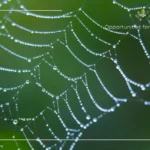Empathy is frequently described as a fundamental virtue. It is the engine that drives us to fight for causes, to worry about justice, and to feel the pain of the genocide in Gaza or the urgency of global emergencies. However, we rarely discuss the heavy cost that this virtue demands, especially when it collides with generalized apathy.
Lately, many of us have been confronted with this specific and profound pain. It is that sting that arises when we care intensely about people, about justice, and about the planet, while the world around seems content to simply scroll the screen, contained within its own bubble of comfort. For those whose core identity is anchored in compassion, this indifference is not a neutral observation – it is a personal affront. It fundamentally shakes our conviction and our commitment.
The Exhaustion of Carrying the Weight Alone
In this moment of empathic fatigue, our pain is fueled by a conflict between vision and reality:
- The Burden of Clear Vision: Advocacy, leadership, and the drive for social impact demand that we see reality clearly—with all its inequalities. When this clear vision confronts the voluntary blindness of others, the feeling of isolation can be profound.
- The Energy Deficit: Sustaining the fight for social causes demands a continuous investment of emotional energy. When this energy is repeatedly poured into spaces where it is routinely disregarded or invalidated, we enter a state of emotional deficit.
Caring for the Caregiver: The Power of Setting Boundaries
This profound pain forces a necessary reassessment of where and with whom we invest our valuable emotional capital. Many feel an instinctive need to step away from those whose lives revolve exclusively around their own comfort zones.
Initially, this retreat may seem like coldness or guilt. But we must reframe this action:
Protecting your emotional energy is not an act of coldness; it is a critical act of self-care for the caregiver. It means not losing compassion for those who suffer, but refusing to spend energy where it is constantly invalidated. It is a boundary drawn in care.
The work of social impact and the fight for justice were never meant to be solitary endeavors. Our primary responsibility is to persist in the fight, and to persist, we must find the right connections—those whose compassion echoes our own depth of feeling.
A Plea for Reciprocity and Collective Solidarity
Empathy and solidarity are essential bridges to collective action. If your first instinct in any relationship—whether professional or activist—is focused solely on what you can gain, this may not be a sustainable or nourishing space for you.
We must cultivate spaces where the intrinsic worth of every person and every struggle is recognized. We sincerely hope that you never need to depend on the solidarity of others to overcome difficulties, but if that day comes, may you be received with the depth of empathy that perhaps one day you ignored.
Call to Action: How to Rescue Your Compassion
Caring should not be solitary work. Here are immediate steps you can take to protect your energy and find solidarity:
- Find the Others: Explore the global community and our current projects. Learn more about the initiatives and current partners of OGA to connect with those who share your mission.
- Draw Your Line: Identify a relationship or activity this week that constantly drains your compassion and set a firm boundary. This could be limiting social media exposure or stepping away from a low-impact commitment.
- Share Your Story: If this publication resonated with you, share it. Let others know they are not alone in feeling the weight of the world.
📚 Additional Resources
- About Compassion Fatigue (External): For a professional view on how to manage the stress of helping others, consult the Psychology Today Guide on Compassion Fatigue.
- Collective Care Models (External): Learn about effective strategies for mutual support and community resilience through the Stanford Social Innovation Review.
- Artwork Credit: This post is inspired by the resilience and art of Sliman Mansour, featuring his 2021 painting, “From the River to the Sea.” Learn more about his powerful work on his official website.





